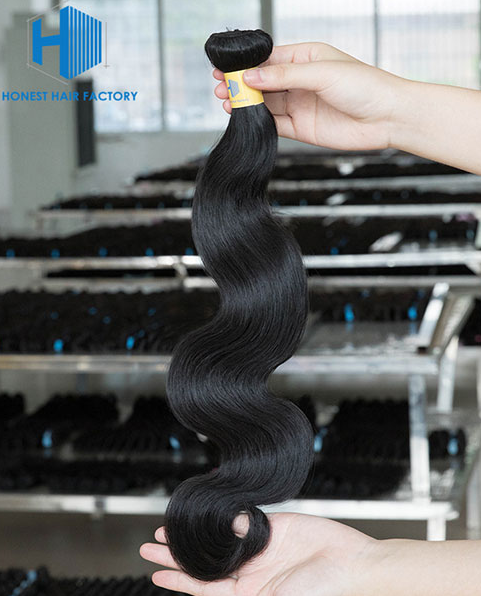What Materials are Wigs Made of - Where Do Hair Vendors Get Human Hair From
Before starting your hair business, it’s critical to learn about the development and production of wigs made of different materials and the sources of the raw materials. In this article, let’s get into two topics: what materials are wigs made of and where do hair vendors get human hair from?

What Materials Are Wigs Made of?
1. Synthetic hair (Chemical fiber hair)
Synthetic chemical fiber is the silk chemical fiber referred to in the wig industry. It refers to the fiber material synthesized by the chemical process. It is a supplement to the raw materials of human hair. PP material, such as polypropylene fiber, was widely used in the early stage and was the cheapest one. Synthetic hair fibers mainly include acrylic, polyester, polyvinyl chloride (PVC), and Kanekalon. Synthetic hair is more cost-effective but not as durable as wigs made from virgin hair or human hair.
2. Real hair (Human hair)
According to different regions, human hair can be mainly divided into China hair, Indian hair, Brazilian hair, Burmese hair, Vietnam hair, etc. Because of its material, it can be ironed and dyed and is easy to preserve, but the output of human hair is limited, and the price of human hair products is slightly more expensive. According to the growth law of human beings, the longer the hair, the longer the growth time, the rarer the raw materials, and the higher the price. Real human hair includes non-Remy hair, Remy hair, and virgin hair.
The main difference in human hair in various regions lies in the quality and curvature of hair. Chinese hair, Mongolian hair, Myanmar hair, and Vietnamese hair belong to Asian hair, with thick and straight hair. Among them, Chinese hair is the best, Chinese hair feels smooth and the price is the most expensive. Brazilian Hair and Indian hair are relatively soft in hair quality and slightly curved. They are suitable for European and American Hairstyles. They are mostly used for hair extensions.
Where Do Hair Vendors Get Human Hair From
Where do hair vendors and loose wave wig manufacturers get human hair materials from? The two largest hair raw material supply areas in the world are China and India.
Indian Hair
Since the late 1960s, Indian hair products have sold well in the European and American markets and still stick to the upstream of the discrimination chain in the wig market. Especially in the high-end market, Indian women, especially women in the south, rarely bleach their hair with chemicals, but comb and wash their hair daily and soak their hair with coconut oil to keep it silky, so their hair has become the top virgin hair. A major source of virgin hair is donations received by Hindu temples from devout believers. Another source of Indian wigs is the hair sold to vendors by poor women in local rural areas. This kind of haircut directly from a woman's head is called Remy hair. In India, after the initial acquisition and concentration of human hair, it will enter the next link of the circulation chain: cleaning, combing, and classification in small workshops in local or cheaper countries such as Bangladesh and Myanmar.
Chinese hair
The legendary story of Indian and Chinese hair traffickers going from place to place to buy hair from people has long been an Asian anecdote concerning Western media. As it becomes more and more difficult to buy hair, raw material vendors in large countries have already gone abroad to buy hair in Myanmar, Laos, Mongolia, Indonesia, and other countries, which is a source of income that can not be ignored for some less developed regions. Xuchang City, Henan Province, known as China's wig capital, once had a hair-purchasing army of 20000 people during the peak period. Every year, thousands of tons of hair from all over the world gathered in the city, which was scattered, divided, and tied in various factories and workshops, waiting for processing and sales.
These raw hair bundles from East Asian countries has gone through countless hands at this time. It is often difficult to distinguish whether it is the hair of poor women or the hairball of sewers. Their next stop is usually China, Indonesia, and India. They are processed into wigs and hairpieces in factories and then sold to the international market. Among them, China has more than 70% of the world's wig factories. In 2018, exported wig products accounted for about 80% of the global market. The wig factory will screen, disinfect, bleach, iron, and oven-shape the hair, and then make it into wigs for sale in overseas markets.

